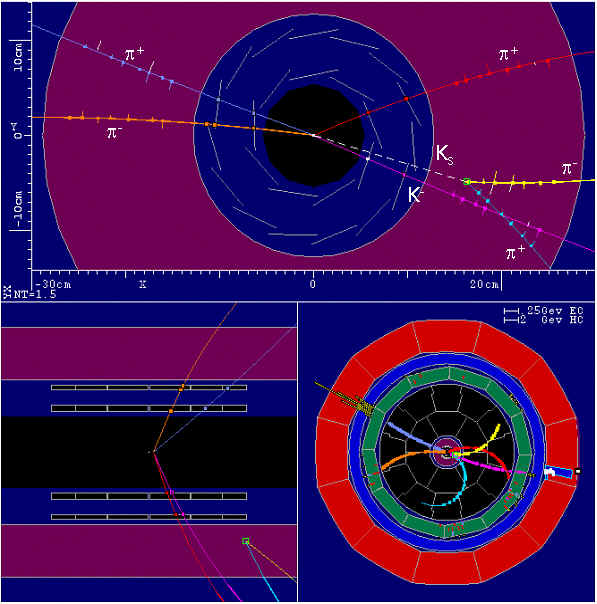
The three pictures below show the same event in different cross sections through the ALEPH detector. In the lower right picture you can see an overview of the layers of detectors (like an onion) that are placed around the beam tube which is perpendicular to the picture. The outermost red ring is the Hadron calorimeter, the little dark blue dot in the center is the vortex detector. All these detectors are inside a magnetic field which is produced by a big coil (blue), that surrounds them. The lower left picture is a cross section which shows the beam axis.
The upper picture shows a zoom view of the vertex detector (dark blue ring) and the inner tracking chamber (bordeaux-red ring). After the electron-positron collision there have been particles produced. You can see the tracks of them in different colors. The electron-positron beam, represented by a white dot in the center of the picture and the magnetic field produced by the coil are perpendicular to the picture plane.

a) What is the the outer radius of the vertex detector?
b) In which direction does the magnetic field point?
c) How many particles are produced right after the interaction?
d) What is the electric charge of the short kaon Ks?
e) The lifetime of this particle is 89.35 picoseconds (= 0,000 000 000 08935 s). Suppose the Ks escapes from the interaction point with the velocity of light. How far can it get?
f) How far does it actually get in the experiment? Try to explain this difference.
g) Calculate the velocity of the Ks in reference to the detector system.
h) Further calculations show, that the velocity of the Ks is even bigger. Can you explain that?
Click here for solutions to exercise 1
Tracking using simple geometry